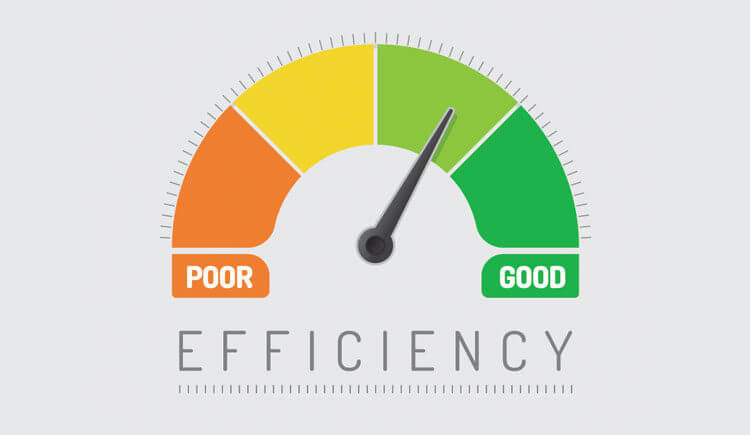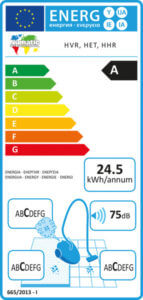Vacuum Cleaner Ratings Explained
|
If you’ve been on the hunt for a new vacuum cleaner in the last few weeks, then you’ve probably noticed the various rating labels. These ratings are part of the EU’s standards which help consumers understand how powerful and efficient a vacuum cleaner is.
Since 2014, all corded upright and cylinder vacuum cleaners have their performance metrics listed with a label. At first glance, this label might seem confusing and make no sense, but in reality, it’s not as complicated as it looks. To help you make sense of the label and numbers, we’re taking a closer look at how to interpret the various metrics. Not only will this help you understand what each symbol means, but it will also help make sure the hoover is suited for you.
To get things started, let’s take a look at one of the labels from a random domestic vacuum cleaner.
Now, this label might look confusing at first glance, but it’s really not. Once you understand what each symbol means it makes perfect sense. Let’s start with the big different coloured letters at the top.
Overall Rating
The different coloured letters at the top indicate the vacuum’s overall efficiency and energy rating. It’s useful as a quick overview to compare with other vacuums without having to look through the various ratings and metrics.
The letters are arranged from highest to lowest with the green A being the highest. A high overall rating will indicate higher performance while using less energy. Whereas a low over rating indicates low suction and performance while using lots of energy. As a rule of thumb try to look for cleaners within the A to C range.
Energy Usage
Below the overall rating to the right is the energy usage of the vacuum cleaner. Measured in kWh per year, the lower the number, the more efficient the vacuum is. This number can also be used to estimate how much it will cost to use the hoover throughout the year.
Noise Level
Just below the energy usage box is the noise level meter of the vacuum as indicated by the volume speaker. Measured in decibels, this is the average volume of the vacuum when turned on. The lower the rating, the quieter the vacuum, but as a rule of thumb lower noise levels mean lower suction power.
Pick Up on Hard Floor Rating
Below the noise level measurement on the bottom right of the label is the pickup rating on hard floors. Rated from A to G, the rating shows how effective the vacuum is at picking up debris on hard floors such as tiles and laminate flooring. The closer to A means the more debris the vacuum will pick up overall, leaving your floors nice and clean.
Pick Up on Carpet Rating
Just like the hard floor pick up rating, there is also one for carpets which is indicated on the bottom left of the label. If you’re having trouble working out which rating is which, then take a closer look at the diagram. You can see that there is a clear divide between the carpet on the left and hard floor on the right.
The pickup on carpet rating is also measured from A to G with A being the highest and offering 91% pickup on carpets. The higher the pickup ratings in general, usually the more power and noise your vacuum will make.
Filtration Rating
The final rating on the label located just above the pick up on carpet rating is the filtration rating. Rated from A to G, with A being the highest, this rating indicates how well a vacuum is able to retain dust and minimise the amount re-emitted.
As you can imagine, the last thing you want is your vacuum to blow out all the dust you’ve just hoovered up!
Now you know how to read any energy efficiency label, this will help you make the right decision when browsing the hundreds of different vacuums out there. Looking for a high rated vacuum to keep your house in top condition? Browse our range of domestic vacuum cleaners below.
 14-day returns
14-day returns



